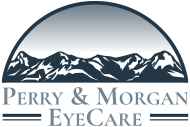Myopia is more than an inconvenient childhood eye condition. It can have serious consequences later in life. Unfortunately, myopia cannot be cured. But there are treatments and control methods an eye doctor can use to slow or completely halt the condition’s progression.
A child’s early years are filled with rapid development in their body and eyes. Regular eye examinations are one of the best ways to stay on top of your child’s eye health. Successful treatment of many vision or eye problems begins with prompt diagnosis.
What Is Myopia?
Myopia, also known as nearsightedness, is the most common refractive error. The eye’s shape causes it to refract light in a way that causes distant objects to be blurry. Typically this error develops during childhood and adolescence. If left untreated or uncorrected, it will usually worsen into the youth’s adulthood.
Possible Signs of Myopia
If your child begins developing myopia, their eye doctor will typically be able to detect it during an eye exam. But at the very least, even a vision screening—from a school nurse or doctor, for example—could be enough to detect myopia.
It’s essential for anyone to visit the eye doctor if they notice vision changes in between exams. But depending on your child’s age, they may not be able to let you know they’ve noticed a difference. A few signs your child may be developing myopia include:
- Wanting to sit closer to the front of the class or the TV
- Complaining of not seeing properly
- Seemingly unaware of distant objects
- Squinting
- Rubbing their eyes
Myopia Management Methods
Myopia does not have a cure, but if diagnosed early enough, myopia management may be an option. Myopia management aims to slow or stop the refractive error from worsening. If successful, this could prevent the child’s need for corrective measures later in life.
There is more than a one-size-fits-all answer for which form of myopia management is the best. Each child’s vision needs and eyes are different. And your child’s eye doctor considers all this when recommending a management plan.
Some myopia management methods include:
Medication
In some cases of myopia, medication may be an option. Atropine, pirenzepine, and 7-methylxanthine (7-MX) are three potential options, with low-dose atropine being the most common.
A topical drop, like atropine, helps control myopia by dilating the pupils and temporarily paralyzing the eye’s focusing muscles and focusing mechanisms. This treatment stems from research indicating eye fatigue in children being a leading cause of myopia.
Specialty Contact Lenses
In addition to the medication options for managing myopia, there are also several contact lens management options for some children.
Orthokeratology (Ortho-k) lenses are worn by age-appropriate children while they sleep. The lenses are designed to reshape the cornea gently overnight. Then the child needs no other vision correction during the day. While Ortho-k lenses help to remove the need for glasses during the day the vision can markedly change once the patient stops this form of treatment.
Another great contact lens option for some kids is the MiSight 1-day corrective lenses. Unlike Ortho-k lenses, which the child wears overnight, MiSight 1-day lenses provide a combination of myopia treatment and distance correction during the day. They are daily disposable as well, which minimizes the chances of your child introducing germs into their eyes. The effect of MiSight lenses have been shown to continue after the patient is finished with treatment.
Myopia Treatment Options
How myopia is treated depends on when. In many cases, during childhood and adolescence, management of the refractive error and halting it. At Perry & Morgan EyeCare, we’re happy to offer the MiSight 1-day contact lenses, which combine correction and management.
In situations where management isn’t an option, treatment for myopia would be similar to hyperopia or astigmatism—a couple of other refractive errors.
Prescription Glasses
Eyeglasses are a common way that the eye doctor brings your vision as close to 20/20. Typically the lens prescription can be customized to meet most prescription needs. Additionally, many optometrists have several lens options with various benefits, such as anti-glare coating, blue light filter, or UV protection.
Contact Lenses
For those who don’t want to wear glasses, contact lenses may make a great alternative. There are various types and brands available. Some fit a wide range of prescriptions, whereas others have a more specialized application. Your eye doctor can help you choose the ones that are right for you or your child.
Refractive Surgery
There are several options available for refractive eye surgery. Success rates can vary between procedures, but most people no longer need corrective eyewear after refractive surgery. If they do need glasses, usually it’s only for certain activities.
Book Your Child’s Next Eye Examination
If you notice any of the possible signs of myopia in your child, schedule an appointment with your family eye doctor for a comprehensive eye exam. You and your optometrist can decide the best path forward for your child.
Reach out and book an appointment with Perry & Morgan EyeCare today.



